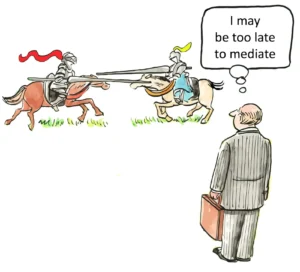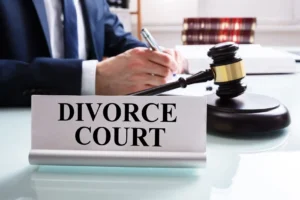How an Immigration Lawyer Optimizes Videos for Better SEO Rankings?
Immigration attorneys frequently ask, “How can I optimize my legal videos to achieve better search engine rankings and reach more potential clients?” The answer lies in understanding that video SEO optimization for immigration law requires a strategic blend of technical expertise, cultural sensitivity, and search engine best practices. Unlike general legal marketing, immigration attorney videos must address multilingual audiences, urgent legal needs, and complex federal regulations while maintaining professional credibility and ethical compliance. Successful video optimization combines keyword research targeting phrases like “immigration lawyer near me” with content that genuinely serves the immigrant community’s information needs.
The digital landscape for immigration law has fundamentally shifted, with over 95% of potential clients conducting online research before contacting an attorney. Video content now represents the most engaging format for explaining complex immigration processes, with viewers retaining 95% of information from videos compared to just 10% from text. This dramatic difference makes video content strategy essential for immigration attorneys who want to connect with clients facing deportation proceedings, family reunification cases, or employment-based visa applications.
What Makes Immigration Law Video SEO Different from General Legal Marketing?
Immigration video marketing operates within unique constraints that distinguish it from other legal practice areas. The multilingual nature of immigration law requires attorneys to optimize content for both English and native language searches, with Spanish-language videos often generating 151% more impressions than English versions at 68% lower cost. This linguistic complexity demands sophisticated keyword strategies that account for how different immigrant communities search for legal information.
The urgency factor in immigration cases creates distinct search patterns compared to other legal services. Potential clients often search using emotional language like “deportation help” or “visa denied what to do” rather than technical legal terms. Immigration attorneys must optimize for these crisis-driven searches while maintaining professional standards and avoiding exploitation of client fears.
Geographic targeting for immigration videos presents additional complexity because federal immigration law allows attorneys to serve clients nationwide, yet local factors like state court procedures and regional enforcement priorities significantly affect case outcomes. Successful optimization strategies must balance broad national reach with location-specific content that addresses regional variations in immigration enforcement and court practices.
The cultural sensitivity required for immigration law content affects every aspect of video optimization, from thumbnail design to transcript accuracy. Videos must demonstrate cultural competence while avoiding stereotypes or assumptions about immigrant communities. This cultural awareness extends to understanding how different communities consume digital content and which platforms they prefer for legal information.
How Should Immigration Attorneys Conduct Keyword Research for Video Content?
Keyword research strategies for immigration law videos must account for the diverse ways potential clients describe their legal situations. Traditional legal terminology rarely matches the language immigrants use when searching for help, requiring attorneys to think beyond standard legal phrases to understand client search behavior. Tools like Google Keyword Planner reveal that searches for “green card through marriage” generate significantly more volume than “adjustment of status based on marriage.”
The emotional context of immigration searches creates opportunities for long-tail keyword optimization. Phrases like “what happens if I miss my immigration court date” or “can I apply for asylum if I overstayed my visa” reflect the specific concerns driving client searches. These conversational queries align perfectly with voice search optimization, as people increasingly use natural language when speaking to digital assistants.
Local keyword integration requires careful consideration of how federal immigration law intersects with state and local policies. Terms like “sanctuary city immigration lawyer” or “Texas immigration attorney deportation defense” capture both geographic and practice area specificity. Immigration attorneys should research local enforcement patterns and policy developments that might influence search behavior in their target markets.
Seasonal keyword patterns affect immigration law searches, with certain times of year seeing increased activity around specific visa categories or policy changes. Understanding these patterns helps attorneys time their video content releases to maximize visibility when potential clients are most actively searching for information about particular immigration processes.
What Technical Optimization Strategies Improve Immigration Video Rankings?
Mobile optimization becomes critical for immigration law videos because many potential clients rely primarily on smartphones for internet access. Videos must load quickly on slower connections and display clearly on smaller screens, with readable text overlays and clear audio that works through phone speakers. Google’s mobile-first indexing means that mobile performance directly affects search rankings.
Video hosting decisions significantly impact SEO performance for immigration attorneys. While YouTube provides excellent search visibility and multilingual caption capabilities, hosting videos on law firm websites improves site engagement metrics and keeps visitors within the firm’s digital ecosystem. The optimal strategy often involves hosting on both platforms, with YouTube serving as a discovery channel and website embedding providing conversion opportunities.
Technical schema markup helps search engines understand video content and display rich snippets in search results. Immigration attorneys should implement VideoObject schema that includes relevant legal practice area information, duration, and transcript data. This structured data improves the likelihood of appearing in featured snippets and video carousels for relevant searches.
File naming conventions affect video SEO before content even gets uploaded. Descriptive filenames like “chicago-immigration-lawyer-asylum-process-explained.mp4” provide search engines with immediate context about video content. This optimization extends to thumbnail files, which should use similarly descriptive naming patterns that include relevant keywords and location information.
How Do Multilingual Considerations Affect Video SEO for Immigration Law?
Multilingual video optimization presents unique challenges and opportunities for immigration attorneys serving diverse client populations. Spanish-language content often outperforms English versions in both engagement and cost-effectiveness, but optimization strategies must account for regional dialect differences and cultural preferences that vary among different Latino communities.
Subtitle and caption optimization requires more than simple translation, demanding cultural adaptation that maintains legal accuracy while using language patterns familiar to target audiences. Professional translation services familiar with legal terminology ensure that captions serve both accessibility and SEO purposes without introducing errors that could mislead potential clients about legal processes.
Hreflang implementation becomes essential for immigration attorneys creating content in multiple languages. This technical markup tells search engines which language versions to display to users based on their location and language preferences. Proper hreflang implementation prevents duplicate content issues while ensuring that Spanish-speaking users in Texas see Spanish videos while English speakers in the same area see English versions.
Platform-specific considerations affect multilingual video strategy because different immigrant communities prefer different social media platforms and video consumption patterns. Understanding these preferences helps attorneys allocate resources effectively across platforms while optimizing content for each platform’s specific algorithm and user behavior patterns.
What Content Strategies Drive Engagement and Search Visibility?
Educational content development for immigration law videos must balance comprehensive information with accessibility for non-lawyers facing complex legal situations. The most successful videos answer specific client questions like “How long does the green card process take?” or “What documents do I need for my asylum interview?” These targeted topics align with search intent while demonstrating attorney expertise.
Case study videos provide powerful content for SEO while showcasing attorney capabilities, but immigration law’s sensitive nature requires careful handling of client confidentiality. Successful approaches often use anonymized scenarios or composite cases that illustrate common situations without compromising individual privacy. These videos can target keywords like “successful asylum case” or “family reunification immigration lawyer.”
FAQ video series allow immigration attorneys to address common client concerns systematically while building comprehensive keyword coverage across their practice areas. Videos addressing questions like “Can I work while my asylum case is pending?” or “What happens if USCIS denies my application?” target specific search queries while providing genuine value to potential clients.
The storytelling approach in immigration videos must respect the dignity and complexity of immigrant experiences while maintaining professional boundaries. Effective videos acknowledge the emotional challenges clients face while focusing on practical legal information and process explanations that empower viewers to make informed decisions about their cases.
How Should Immigration Attorneys Optimize Video Titles and Descriptions?
Title optimization for immigration law videos requires balancing keyword inclusion with compelling language that encourages clicks while accurately representing content. Titles like “Green Card Through Marriage: Complete Process Guide 2025” combine primary keywords with specificity and timeliness that improve both search rankings and click-through rates.
The front-loading strategy for video titles places the most important keywords at the beginning, where they carry more SEO weight and remain visible in truncated search results. Immigration attorneys should prioritize practice area terms and location information in title openings, such as “Chicago Immigration Lawyer Explains Asylum Process” rather than “Complete Guide to Asylum Applications by Chicago Immigration Lawyer.”
Description optimization provides opportunities for comprehensive keyword inclusion while offering detailed content summaries that help both search engines and potential clients understand video value. Effective descriptions include primary and secondary keywords naturally while providing chapter timestamps for longer videos and clear calls-to-action for viewer engagement.
Meta description strategies for immigration videos should emphasize the practical value and immediate relevance to potential clients’ situations. Descriptions highlighting specific benefits like “Learn the exact documents needed for your adjustment of status interview” perform better than generic descriptions about immigration law expertise.
What Role Do Video Transcripts Play in Immigration Law SEO?
Transcript optimization serves dual purposes for immigration law videos by improving accessibility for hearing-impaired viewers while providing search engines with indexable text content. Accurate transcripts that include relevant keywords naturally throughout the content significantly boost video SEO performance while serving important accessibility functions for diverse immigrant communities.
The keyword density in transcripts should reflect natural speech patterns rather than forced keyword stuffing that compromises content quality. Immigration attorneys should ensure that transcripts accurately reflect the conversational tone and specific legal terminology used in videos while maintaining readability for potential clients who may read transcripts instead of watching videos.
Multilingual transcript strategies require professional translation services that understand both legal terminology and cultural nuances. Machine translation often introduces errors that can mislead potential clients about important legal processes, making professional translation essential for maintaining both SEO effectiveness and ethical compliance.
Timestamp integration in transcripts improves user experience while providing additional SEO benefits through structured content organization. Immigration attorneys can use timestamps to highlight key topics and create internal linking opportunities that improve overall website SEO performance.
How Do Platform-Specific Strategies Affect Immigration Video SEO?
YouTube optimization for immigration law content requires understanding the platform’s algorithm preferences for engagement metrics like watch time, comments, and shares. Immigration videos that maintain viewer attention throughout their duration signal quality to YouTube’s algorithm, improving rankings for relevant searches and suggested video placements.
The community building aspect of YouTube provides immigration attorneys with opportunities to engage directly with potential clients through comments and community posts. Responding to viewer questions demonstrates expertise while generating additional engagement signals that improve video performance. However, attorneys must maintain professional boundaries and avoid providing specific legal advice through public comments.
Website embedding strategies should prioritize user experience while maximizing SEO benefits. Immigration attorneys should embed videos on relevant service pages and blog posts, using schema markup to help search engines understand the relationship between video content and page topics. Strategic embedding improves site engagement metrics while keeping visitors within the firm’s digital ecosystem.
Social media platform optimization requires tailoring content and posting strategies to each platform’s unique audience and algorithm preferences. LinkedIn works well for business immigration content targeting employers and HR professionals, while Facebook and Instagram may be more effective for family-based immigration content reaching individual clients and their families.
What Metrics Should Immigration Attorneys Track for Video SEO Success?
Performance measurement for immigration law video SEO requires tracking metrics that align with client acquisition goals rather than vanity metrics that don’t correlate with business outcomes. Watch time and completion rates provide insights into content quality and audience engagement, while click-through rates from video to website indicate conversion potential.
Geographic analytics help immigration attorneys understand their market reach and identify opportunities for expansion or local market development. Understanding where video viewers are located helps attorneys tailor content to regional needs while identifying underserved markets that might benefit from targeted video content.
Conversion tracking from video views to actual client consultations provides the most meaningful measure of video SEO effectiveness. This tracking requires sophisticated analytics setup but provides crucial insights into which content types and presentation approaches generate the best return on investment for video production efforts.
Keyword ranking improvements for target terms indicate SEO success while helping attorneys understand which topics and optimization strategies produce the best results. Regular monitoring of rankings for terms like “immigration lawyer [city]” or “deportation defense attorney” helps attorneys adjust their video strategies based on performance data.
How Do Ethical Considerations Shape Immigration Video SEO Strategies?
Professional responsibility requirements create specific constraints on immigration attorney video marketing that go beyond general attorney advertising regulations. The vulnerable nature of immigrant populations requires heightened attention to truthfulness, cultural sensitivity, and avoiding exploitation of client fears in video content and optimization strategies.
Client confidentiality obligations affect how immigration attorneys can discuss cases or use client experiences in video content. Even anonymized case studies must be carefully crafted to avoid inadvertent disclosure of confidential information while still providing valuable educational content that serves SEO purposes.
Advertising compliance varies by jurisdiction but generally requires that video content avoid creating unrealistic expectations about case outcomes or attorney capabilities. Immigration attorneys must be particularly careful about success rate claims or guarantees that might mislead potential clients about the uncertainties inherent in immigration proceedings.
The prohibition against solicitation takes on particular importance in immigration video marketing because potential clients are often in crisis situations where they may be particularly vulnerable to aggressive marketing tactics. Video content should educate and inform rather than pressure viewers into immediate action.
What Emerging Trends Are Shaping Immigration Video SEO?
Voice search optimization increasingly influences how potential immigration clients discover video content, with more searches conducted through voice assistants using conversational language. Immigration attorneys should optimize video titles and descriptions for natural language queries like “how do I find an immigration lawyer near me” rather than formal legal terminology.
The growing importance of video in local search results creates new opportunities for immigration attorneys to improve their visibility for location-based searches. Google’s emphasis on video content in local search results means that well-optimized immigration law videos can significantly improve local SEO performance.
Artificial intelligence integration in video production and optimization tools provides opportunities for improved efficiency in content creation and performance analysis. AI tools can assist with transcript generation, keyword optimization, and performance tracking while maintaining the human expertise essential for quality immigration law content.
Live streaming capabilities offer opportunities for real-time client education and community engagement through platforms like Facebook Live and YouTube Live. Immigration attorneys can use live content for policy update discussions, Q&A sessions, and educational presentations that build community while demonstrating expertise.
How Should Immigration Attorneys Develop Sustainable Video SEO Systems?
Content production workflows for immigration law videos must balance consistency with efficiency, ensuring regular content creation without overwhelming attorney schedules or compromising client service quality. Successful systems often involve batching video production sessions and developing template approaches that maintain quality while reducing preparation time.
The integration of video SEO with broader digital marketing strategies ensures that video content supports overall practice development goals rather than operating in isolation. Immigration attorneys should coordinate video topics with blog content, social media strategies, and paid advertising campaigns to maximize cumulative impact.
Quality control processes ensure that all video content meets professional standards while accurately representing current immigration law and firm capabilities. These processes should include legal accuracy review, cultural sensitivity assessment, and technical optimization verification before content publication.
Long-term strategy development for immigration video SEO requires understanding how policy changes, enforcement priorities, and demographic shifts might affect client needs and search behavior. Attorneys who anticipate these changes and adjust their video strategies accordingly position themselves advantageously for continued success.
Conclusion: Building Professional Excellence Through Strategic Video SEO
Immigration attorneys who master video SEO optimization gain powerful tools for serving immigrant communities while building sustainable legal practices. The conservative principles that guide effective legal practice—thorough preparation, accurate information, and client-focused service—apply equally to video content creation and optimization strategies.
The constitutional principles underlying due process and equal protection create both opportunities and obligations for immigration attorneys using video marketing. Quality video content contributes to access to justice by making legal information more accessible to diverse immigrant communities while helping attorneys connect with clients who genuinely need their services.
Professional integrity in immigration video SEO requires balancing efficiency gains with ethical obligations to avoid exploitation of client vulnerabilities. The most successful immigration attorneys develop video strategies that reflect genuine commitment to client service rather than mere business development, building trust within immigrant communities through consistent, helpful content.
The technical aspects of video SEO serve broader purposes beyond marketing and client acquisition. Well-optimized immigration law videos improve public legal education, help immigrants understand their rights and options, and contribute to more informed decision-making about complex legal processes.
Sustainable success in immigration video SEO requires long-term commitment to quality, cultural competence, and continuous adaptation to changing client needs and search engine algorithms. Attorneys who treat video content as an integral part of their professional development and client service strategy often find that the skills developed through video creation enhance other aspects of their legal practice.
The future of immigration law practice will likely include video communication as a standard expectation rather than an optional enhancement. Attorneys who develop these capabilities now position themselves advantageously for a professional environment where video literacy becomes as essential as traditional legal research and writing abilities.
The intersection of technology and immigration law creates opportunities for attorneys to serve clients more effectively while building practices that reflect both professional excellence and commitment to justice. Video SEO strategies that prioritize client education, cultural sensitivity, and professional integrity serve the broader interests of American legal institutions while advancing individual attorney success.
Immigration attorneys who embrace video SEO as a tool for professional service rather than mere marketing often discover that their enhanced communication skills, cultural competence, and technological literacy improve their effectiveness across all aspects of legal practice. This comprehensive approach to professional development reflects the conservative principle of continuous improvement in service of both individual success and broader social good.














![Life Insurance – The Ultimate Estate Planning Tool [Video] - Attorneys.Media - Legal Expert Interviews & Trusted Advice Watch: Life Insurance – the Ultimate Estate Planning Tool with Andrew Dósa – Tacoma & Oakland](https://b3514829.smushcdn.com/3514829/wp-content/uploads/2025/09/life-insurance-form-SBI-300194206-300x200.jpg?lossy=2&strip=1&webp=1)





